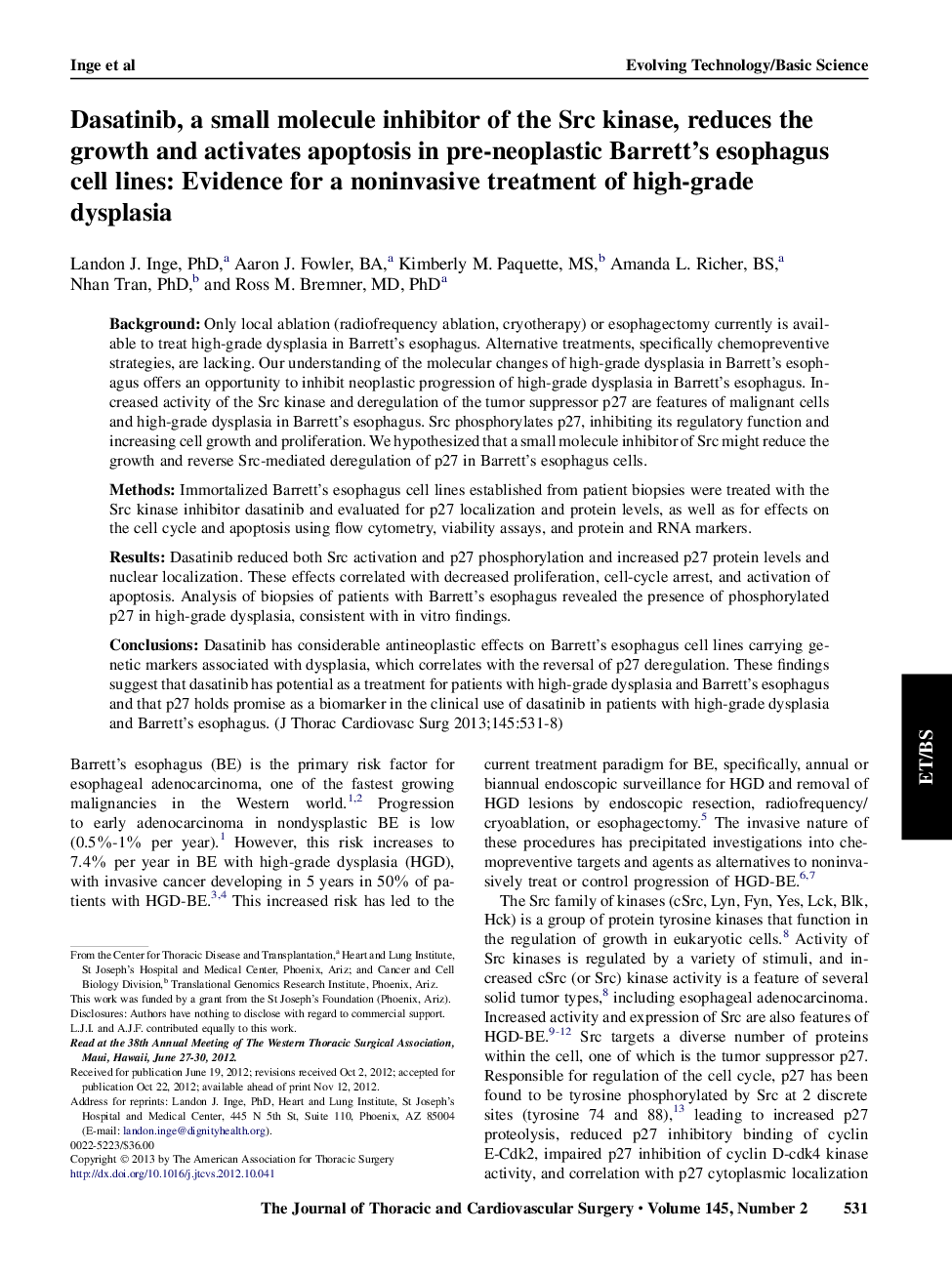| Article ID | Journal | Published Year | Pages | File Type |
|---|---|---|---|---|
| 2981356 | The Journal of Thoracic and Cardiovascular Surgery | 2013 | 8 Pages |
BackgroundOnly local ablation (radiofrequency ablation, cryotherapy) or esophagectomy currently is available to treat high-grade dysplasia in Barrett’s esophagus. Alternative treatments, specifically chemopreventive strategies, are lacking. Our understanding of the molecular changes of high-grade dysplasia in Barrett’s esophagus offers an opportunity to inhibit neoplastic progression of high-grade dysplasia in Barrett’s esophagus. Increased activity of the Src kinase and deregulation of the tumor suppressor p27 are features of malignant cells and high-grade dysplasia in Barrett’s esophagus. Src phosphorylates p27, inhibiting its regulatory function and increasing cell growth and proliferation. We hypothesized that a small molecule inhibitor of Src might reduce the growth and reverse Src-mediated deregulation of p27 in Barrett’s esophagus cells.MethodsImmortalized Barrett’s esophagus cell lines established from patient biopsies were treated with the Src kinase inhibitor dasatinib and evaluated for p27 localization and protein levels, as well as for effects on the cell cycle and apoptosis using flow cytometry, viability assays, and protein and RNA markers.ResultsDasatinib reduced both Src activation and p27 phosphorylation and increased p27 protein levels and nuclear localization. These effects correlated with decreased proliferation, cell-cycle arrest, and activation of apoptosis. Analysis of biopsies of patients with Barrett’s esophagus revealed the presence of phosphorylated p27 in high-grade dysplasia, consistent with in vitro findings.ConclusionsDasatinib has considerable antineoplastic effects on Barrett’s esophagus cell lines carrying genetic markers associated with dysplasia, which correlates with the reversal of p27 deregulation. These findings suggest that dasatinib has potential as a treatment for patients with high-grade dysplasia and Barrett’s esophagus and that p27 holds promise as a biomarker in the clinical use of dasatinib in patients with high-grade dysplasia and Barrett’s esophagus.
